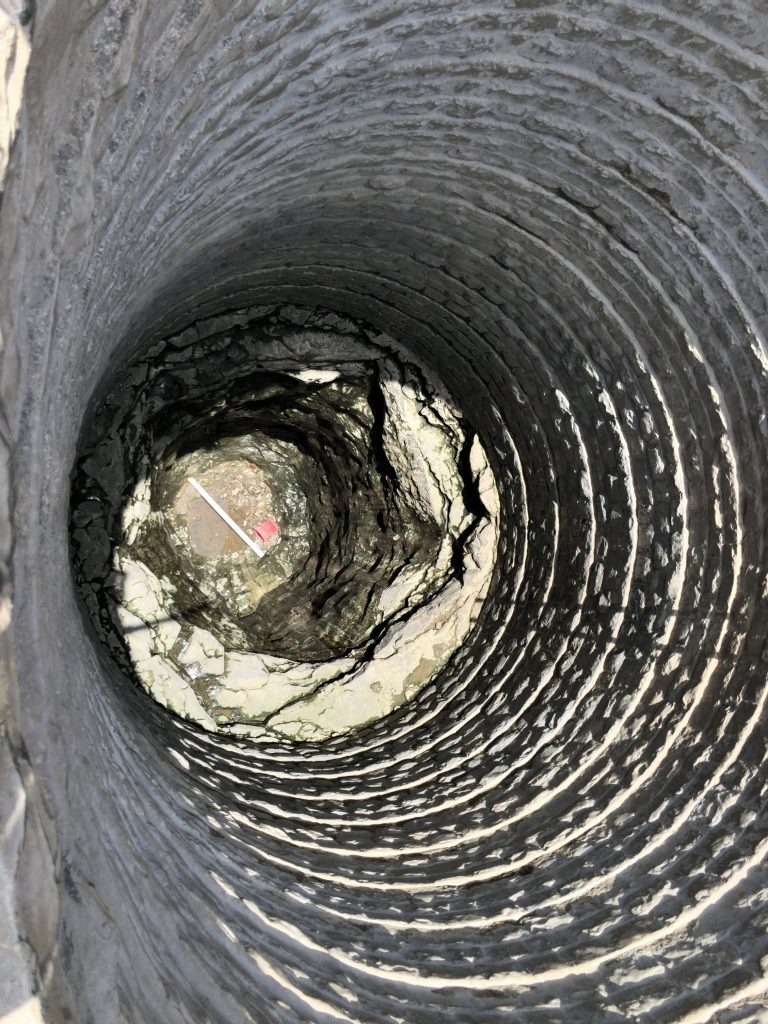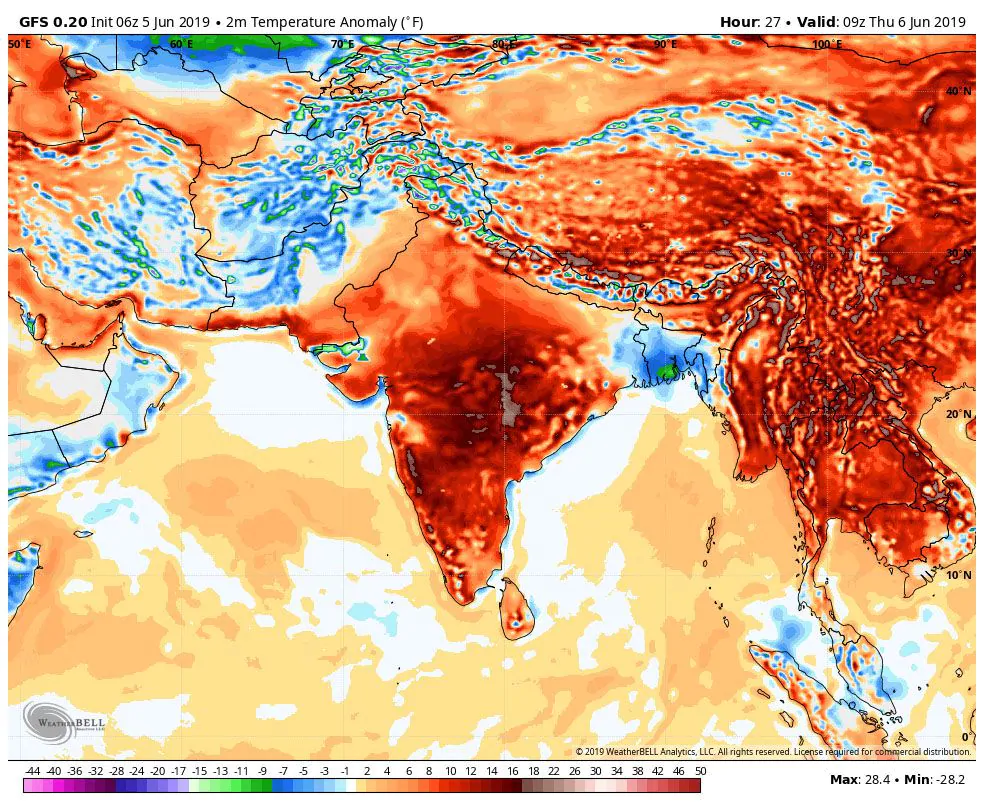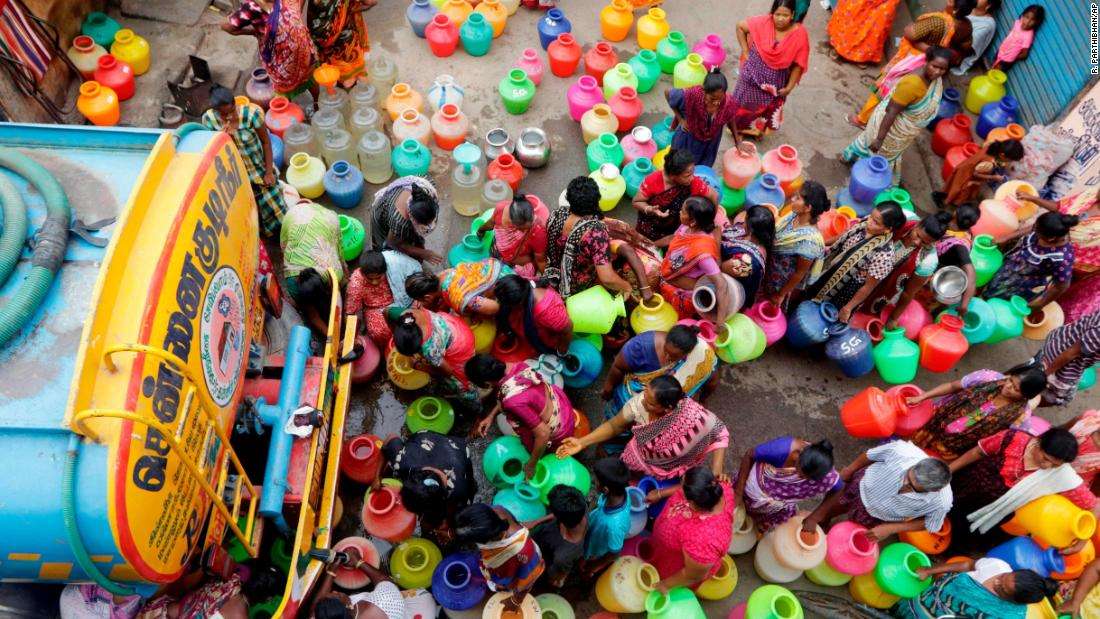Indian villages lie empty as drought forces thousands to flee – Sick and elderly left to fend for themselves – No water left in 35 major dams

By Sam Relph
11 June 2019
DELHI (The Guardian) – Hundreds of Indian villages have been evacuated as a historic drought forces families to abandon their homes in search of water.
The country has seen extremely high temperatures in recent weeks. On Monday the capital, Delhi, saw its highest ever June temperature of 48C. In Rajasthan, the city of Churu recently experienced highs of 50.8C, making it the hottest place on the planet.
Further south, less than 250 miles from the country’s commercial capital, Mumbai, village after village lies deserted. Estimates suggest up to 90% of the area’s population has fled, leaving the sick and elderly to fend for themselves in the face of a water crisis that shows no sign of abating.
The village of Hatkarwadi, about 20 miles from Beed in Maharashtra state, is almost completely deserted.
Wells and handpumps have run dry in the 45C heatwave. The drought, which officials say is worse than the 1972 famine that affected 25 million people across the state, began early in December. By the end of May, Hatkarwadi had been deserted with only 10-15 families remaining out of a population of more than 2,000.
With 80% of districts in neighbouring Karnataka and 72% in Maharashtra hit by drought and crop failure, the 8 million farmers in these two states are struggling to survive. More than 6,000 tankers supply water to villages and hamlets in Maharashtra daily, as conflict brews between the two states over common water resources.

The acute water shortage has devastated villagers’ agriculture-based livelihood. Crops have withered and died, leaving livestock starving and with little to drink. Major crops, including maize, soya, cotton, sweet lime, pulses and groundnuts – drivers of the local economy – have suffered. […]
In Marathwada, by many estimates the Indian region most affected by drought, increasingly frequent droughts have led to more than 4,700 farmer suicides in the last five years, including 947 last year. That crisis has deepened. In the city of Beed, clean drinking water has run out and households do not have enough water to wash clothes, clean dishes or flush the toilet. Hospitals are filling up with people suffering from dehydration – and gastrointestinal disease from drinking contaminated water.
Residents who can afford it pay private water tankers the equivalent of £3 for 1,000 litres of water. Many end up in hospital as a result – even cows refuse to drink the muddy and salty liquid that has been dredged from the bottom of exhausted dams and lakes in the region. […]
By the end of May 2019, 43% of India was experiencing drought, with failed monsoon rains seen as the primary reason. The country has seen widespread drought every year since 2015, with the exception of 2017.
About 20,000 villages in the state of Maharashtra are grappling with a severe drinking water crisis, with no water left in 35 major dams. In 1,000 smaller dams, water levels are below 8%. The rivers that feed the dams have been transformed into barren, cracked earth. [more]
Indian villages lie empty as drought forces thousands to flee

India reels under worst drought in decades, heat kills dozens
17 June 2019 (Al Jazeera) – Almost half of India – an area home to more than 500 million people – is facing drought-like conditions while a blistering heatwave has killed dozens of people in the impoverished eastern state of Bihar.
As the country suffers its lowest rainfall ahead of a monsoon season in more than six decades, the western state of Maharashtra witnesses its worst drought in 47 years, forcing many to leave their lands and take shelter in relief camps, as they wait for monsoon rains.
Reporting from Beed in Maharashtra, Al Jazeera’s Elizabeth Puranam said people walk in intense heat, sometimes for kilometres, only to find a small amount of muddy water at the bottom of a well. […]

“There is no water left in the Beed area. It used to rain by June 7, but there are still no signs of rains. Last year, we had a drought situation. This year is worse. If it doesn’t rain again this year, we have to leave our village,” said farmer Navnath Kadam, who has already spent four months at a relief camp.
India’s hot season has been particularly harsh this year, with temperatures rising above 50 degrees Celsius in the western state of Rajasthan.
In Bihar, severe heat during the weekend killed at least 76 people, according to the dpa news agency. […]
Environmentalist Vandana Shiva, who has been warning about India’s water crisis for decades, says bad policy decisions are responsible.
“The water famine we are facing is a result of over 30 to 40 years of ill advice by financial institutions, and that ill advice, on the one hand, mined the ground water, diverted river waters, destroyed the soil moisture, but is also the single biggest reason for climate change,” she told Al Jazeera. [more]
India reels under worst drought in decades, heat kills dozens


